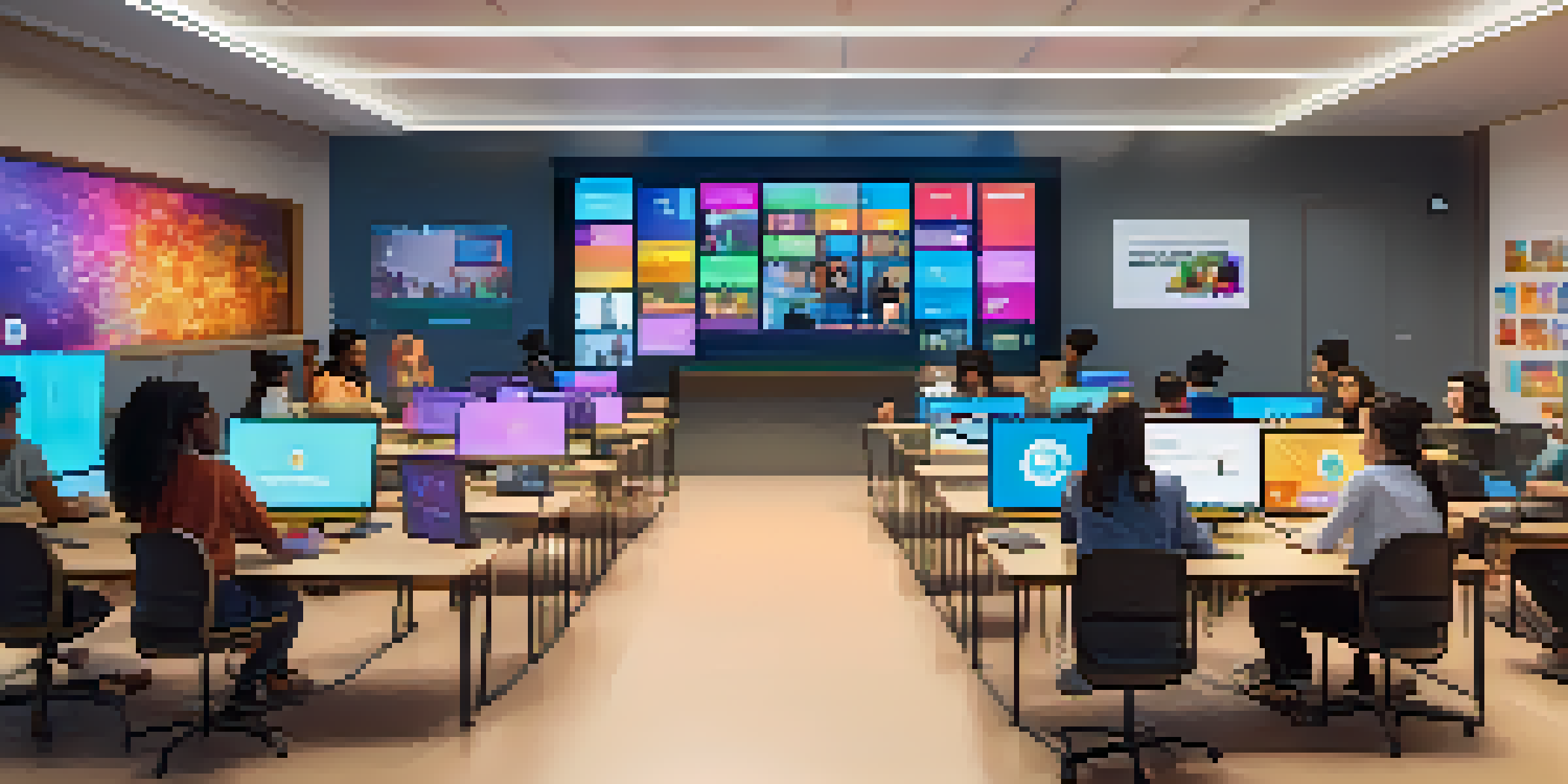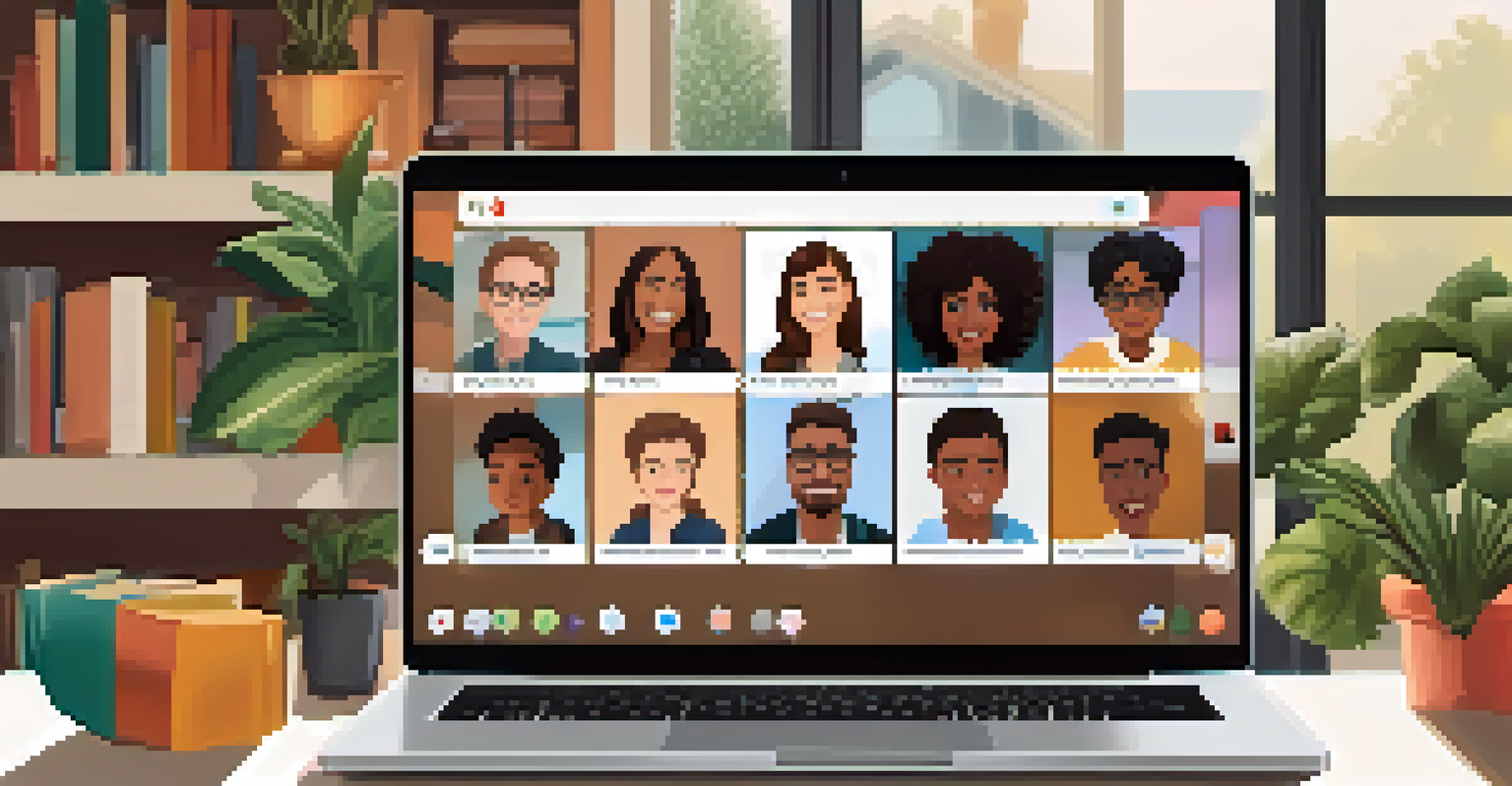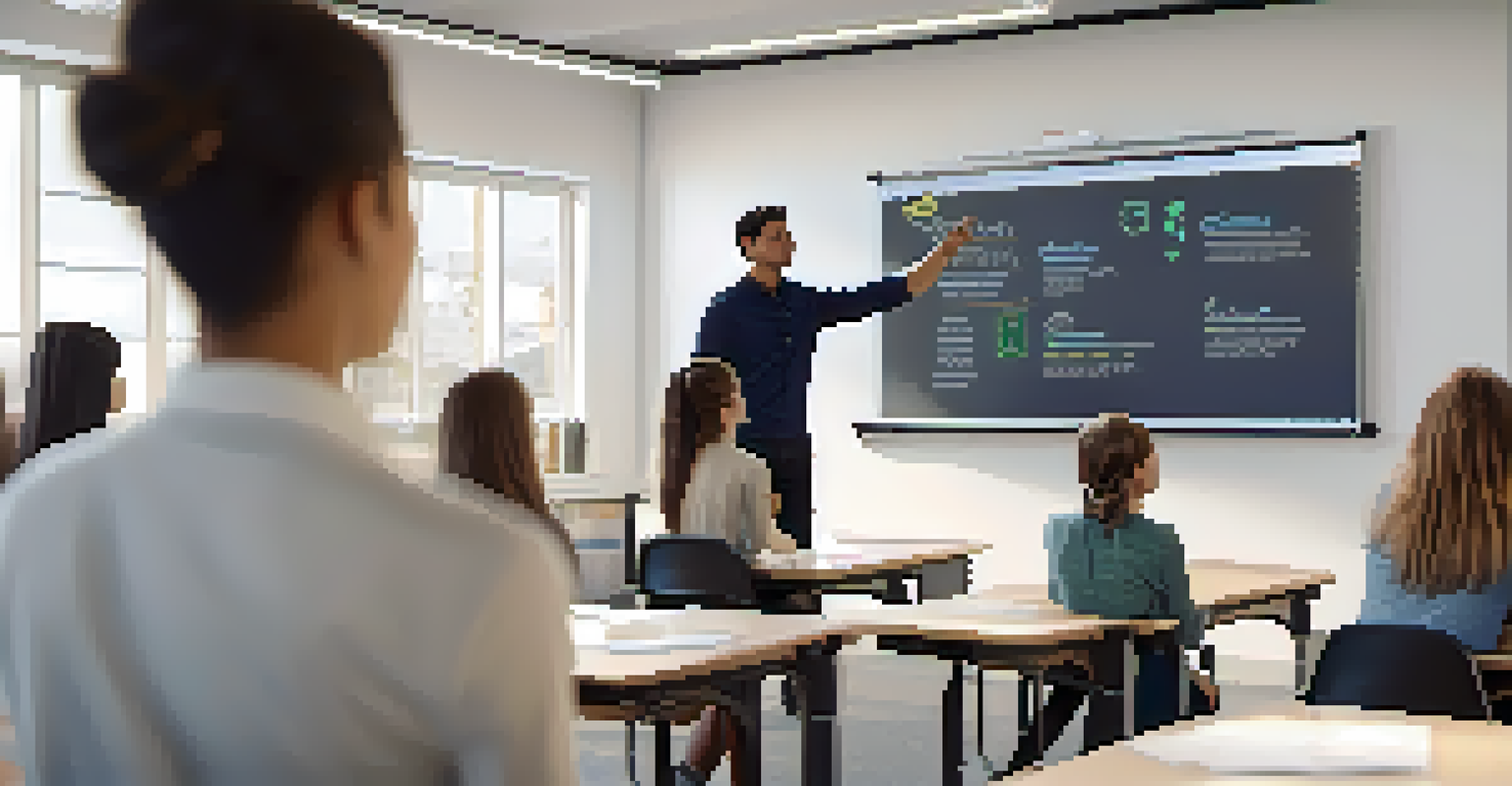Synchronous Learning: Facilitating Real-Time Discussions

Understanding Synchronous Learning and Its Importance
Synchronous learning refers to educational experiences that occur in real-time, where students and instructors interact simultaneously. This format allows for immediate feedback and dynamic discussions, making it a powerful tool in modern education. Think of it as attending a live concert where the energy of the crowd enhances the experience; the same goes for learning when everyone is participating together.
Education is not the filling of a pail, but the lighting of a fire.
Unlike asynchronous learning, where students engage with materials at their own pace, synchronous learning fosters a sense of community. It reduces the feeling of isolation often experienced in online education, as learners can connect with peers and instructors instantly. This connection plays a crucial role in motivation and retention, making lessons more memorable.
With the rise of digital platforms, synchronous learning has become increasingly accessible. Tools like Zoom, Google Meet, and Microsoft Teams facilitate these real-time interactions, allowing educators to reach students anywhere in the world. This flexibility not only broadens the learning landscape but also caters to diverse learning needs.
Benefits of Real-Time Discussions in Learning
Real-time discussions in synchronous learning offer numerous benefits that enhance the educational experience. One of the most significant advantages is the immediate opportunity for clarification; students can ask questions and receive answers on the spot. This instant feedback loop can make complex topics much easier to grasp.

Moreover, engaging in discussions encourages critical thinking and collaboration among students. When learners share their perspectives in real-time, they are exposed to varied viewpoints, which can deepen their understanding of the subject matter. It's like a brainstorming session where every idea adds value to the conversation.
Synchronous Learning Enhances Engagement
Real-time interactions foster a sense of community, reducing isolation and increasing motivation among learners.
Additionally, synchronous discussions can help build stronger relationships between students and instructors. The interactive nature fosters a more personal connection, which can lead to increased engagement and motivation. When students feel valued and heard, they are more likely to participate actively in their learning journey.
Creating an Inclusive Synchronous Learning Environment
To maximize the benefits of synchronous learning, it’s essential to create an inclusive environment where every voice is heard. This can be achieved by implementing ground rules that encourage respectful dialogue and active participation. Consider using icebreaker activities at the beginning of sessions to help everyone feel comfortable and engaged.
The beautiful thing about learning is that no one can take it away from you.
Instructors should also be mindful of different learning styles and adapt their teaching methods accordingly. For instance, incorporating visual aids, group discussions, and hands-on activities can cater to diverse learners. This approach not only enriches the learning experience but also ensures that no student feels left behind.
Lastly, utilizing technology effectively can further enhance inclusivity. Features like breakout rooms allow smaller groups to engage in discussions, giving quieter students a chance to contribute. By leveraging these tools, educators can create a supportive atmosphere that promotes collaboration and learning.
Best Practices for Facilitating Real-Time Discussions
Facilitating effective real-time discussions requires thoughtful planning and execution. One best practice is to establish clear objectives for each session, helping students understand what to expect and focus on. By outlining goals, participants can engage more meaningfully and stay on track during discussions.
Moreover, using open-ended questions can stimulate deeper conversations. These questions encourage students to think critically and share their insights, fostering an enriching dialogue. For instance, rather than asking, 'Did you like the reading?', try 'What are your thoughts on the main argument presented in the reading?' This invites more elaborate responses.
Inclusive Environments Promote Learning
Creating an inclusive atmosphere encourages participation and accommodates diverse learning styles, enhancing the overall educational experience.
Finally, it’s essential to provide opportunities for reflection after discussions. Encouraging students to share what they learned or how their perspectives changed can solidify their understanding. This practice not only reinforces learning but also promotes a culture of continuous improvement.
Overcoming Challenges in Synchronous Learning
While synchronous learning presents exciting opportunities, it also comes with its own set of challenges. One common hurdle is technical difficulties, which can disrupt the flow of discussions. To mitigate this, it’s crucial to conduct tech checks before sessions and provide students with troubleshooting resources.
Another challenge is managing different time zones when working with a global student body. Scheduling sessions that accommodate everyone can be tricky, but offering recorded sessions can help bridge the gap for those who cannot attend live. This ensures that all students have access to the same valuable content.
Additionally, some students may feel anxious about participating in real-time discussions. Creating a supportive environment where mistakes are viewed as learning opportunities can help alleviate this pressure. Encouraging peer support and emphasizing that everyone is on a learning journey can make a significant difference.
Measuring the Effectiveness of Synchronous Learning
To truly understand the impact of synchronous learning, measuring its effectiveness is crucial. One way to do this is through student feedback, collected via surveys or informal discussions. Such insights can help educators identify what works well and what areas need improvement, creating a cycle of continuous enhancement.
Another approach is to analyze student engagement metrics during sessions. Tracking participation levels, the number of questions asked, and overall interaction can provide valuable data. This information can help instructors tailor future discussions to better meet students' needs.
Future Innovations in Learning
Emerging technologies like VR and hybrid learning models promise to elevate synchronous education, making it more interactive and accessible.
Finally, assessing student performance in relation to synchronous learning sessions can also offer insights. Comparing grades and understanding retention rates before and after implementing real-time discussions can help gauge their effectiveness. This data-driven approach ensures that educators can refine their strategies for maximum impact.
The Future of Synchronous Learning
As technology continues to evolve, the future of synchronous learning looks promising. Innovations such as virtual reality (VR) and augmented reality (AR) are on the horizon, potentially transforming real-time discussions into immersive experiences. Imagine engaging in a history lesson while virtually walking through ancient cities; the possibilities are exciting!
Moreover, the trend of hybrid learning—combining in-person and online education—will likely expand, allowing for even greater flexibility. This approach enables learners to participate in real-time discussions while also accessing resources at their convenience. It creates a balanced educational landscape that caters to diverse preferences.

Ultimately, the key to a successful future in synchronous learning lies in adaptability. As educators embrace new technologies and methodologies, they can create enriched, interactive environments that foster engagement and collaboration. This evolution will ensure that learning remains relevant and impactful for students in an ever-changing world.